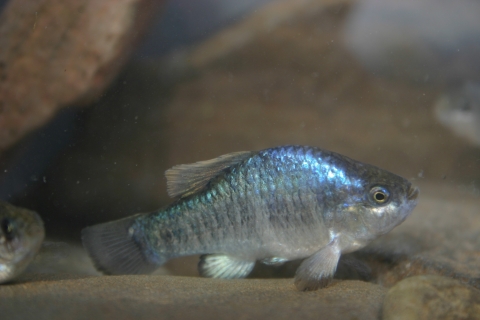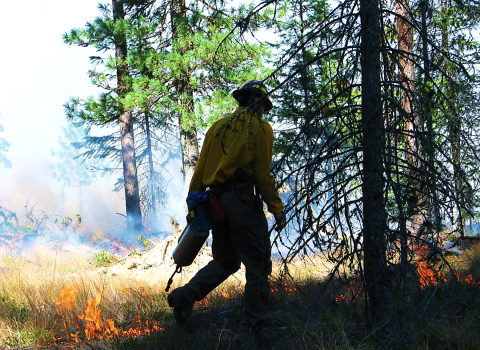The Owens pupfish once inhabited the network of rivers, streams and springs that meander through California's Owens Valley at the base of the Eastern Sierra. They were found from just north of Bishop south to Lone Pine.
Climate change includes both global warming driven by human-induced emissions of greenhouse gases and the resulting large-scale shifts in weather patterns. Though there have been previous periods of climatic change, since the mid-20th century humans have had an unprecedented impact on Earth's climate system and caused change on a global scale.
Learn more about climate change . | Image Details
The small but mighty fish's habitat began to shrink in the early 1900s as water in the Owens Valley was diverted for other uses. Coupled with competition from, and predation by, nonnative introduced amphibians and fish like large mouth bass, Owens pupfish populations declined and the U.S. Fish and Wildlife Service listed them as an endangered species in 1967.
Owens pupfish are small, rarely larger than two and a half inches long. The females are a dusky, olive-green color and the males are bright blue, particularly during their spring and summer spawning season. The pupfish continue to be threatened by habitat loss and nonnative fish and amphibians as well as climate change.
Join Service fish and wildlife biologist Menemsha Zotstein, and the Bishop Paiute Tribe's Environmental Director Brian Adkins, as they share the history of Owens pupfish, what makes them unique, and why they're hopeful for the fish's future in a recent episode of our Fish of the Week Podcast.
If you didn't get enough Owens pupfish in the podcast, spend a few minutes watching a recap of a beautiful event hosted by the Bishop Paiute Tribe to celebrate the establishment of a seventh population of the native fish on the Tribe's reservation.
The Service is grateful for our partnerships in the Owens Valley to conserve Owens pupfish, and other native fish, wildlife and plants in the area.
The U.S. Fish and Wildlife Service works with others to conserve, protect, and enhance fish, wildlife, plants and their habitats for the continuing benefit of the American people. For more information about our work and the people who make it happen, visit https://www.fws.gov/office/reno-fish-and-wildlife or connect with us via Instagram, Facebook, X/Twitter, YouTube and Flickr.





